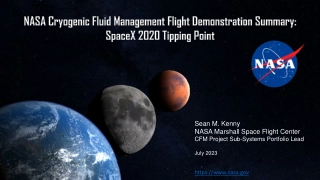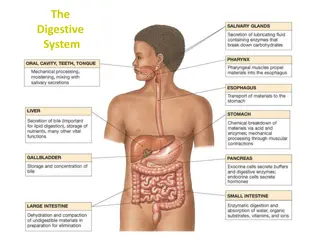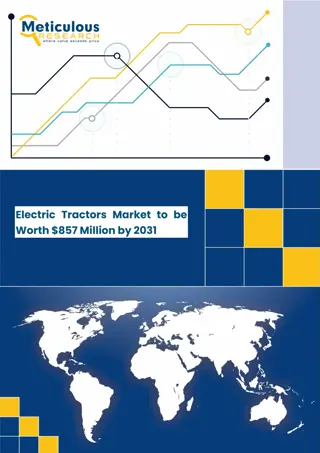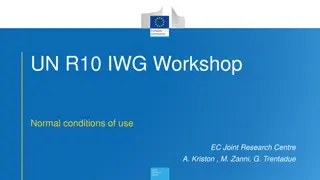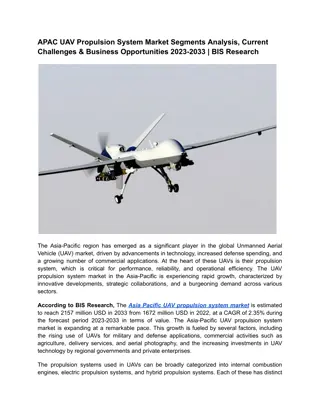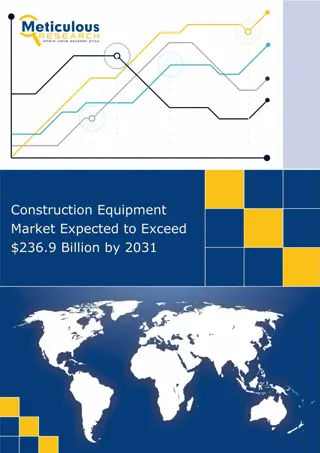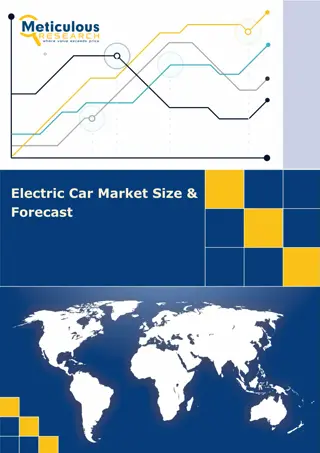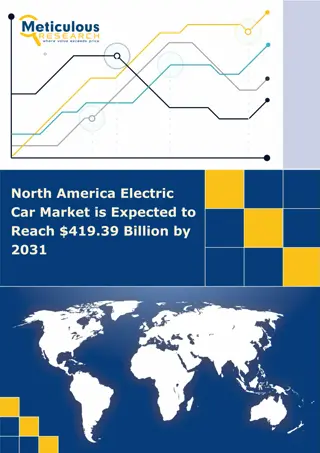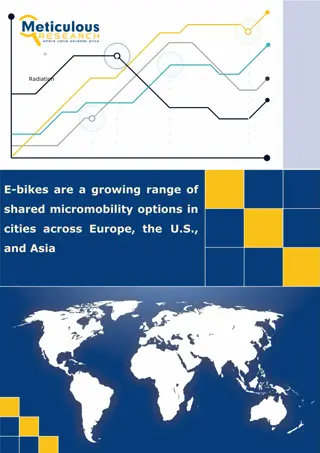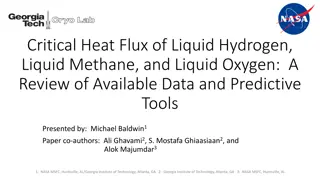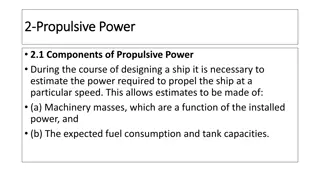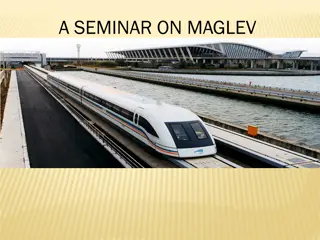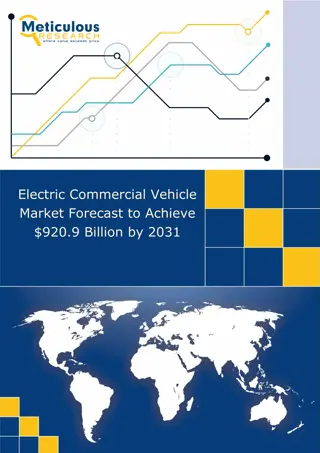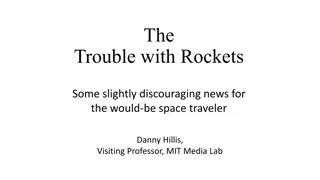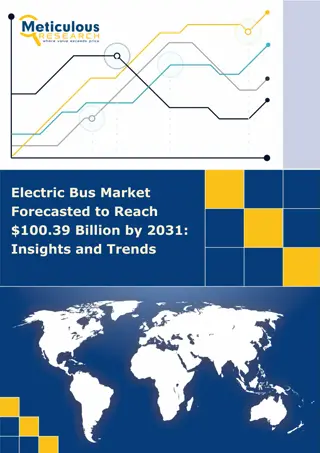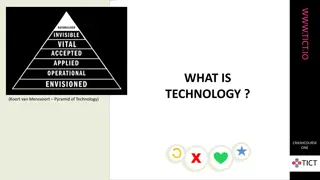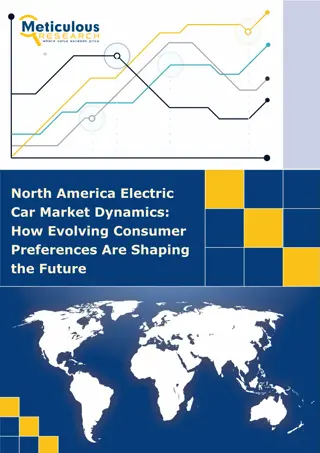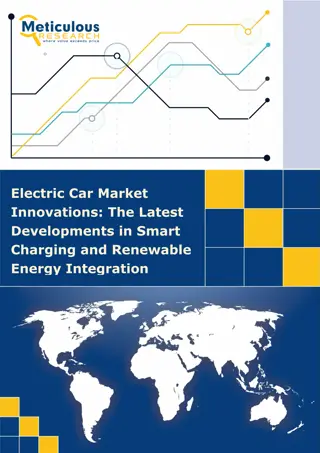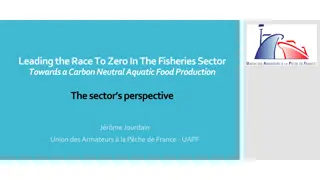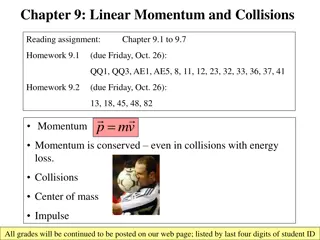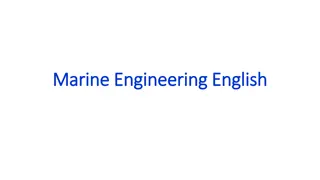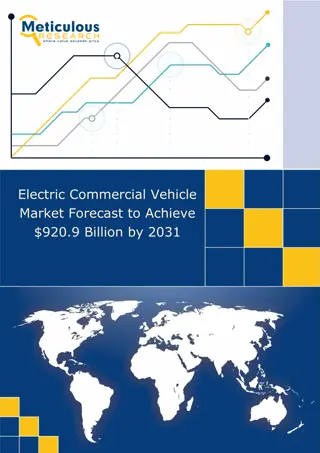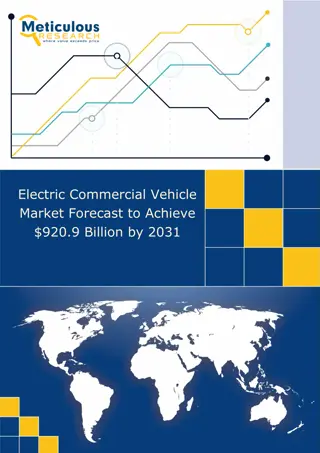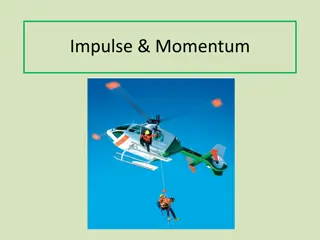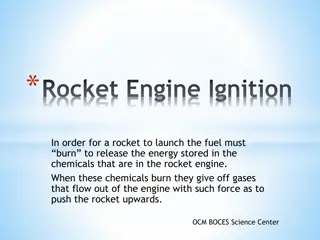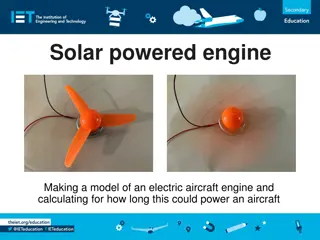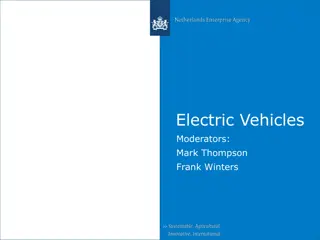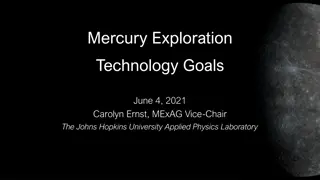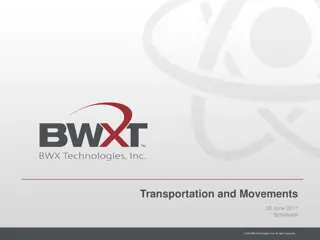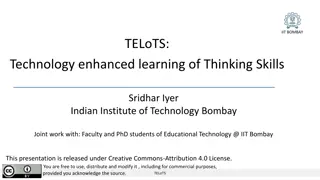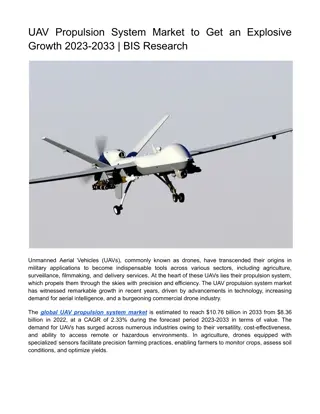NASA Cryogenic Fluid Management Flight Demonstration Summary
NASA selected 14 companies, including small businesses, to develop technologies for sustainable operations on the Moon under the Artemis program. The Cryogenic Fluid Management Portfolio Project aims to close technology gaps essential for future space missions. This Technology Demonstration Mission
0 views • 10 slides
E-bikes Market to be Worth $88.3 Billion by 2030—Exclusive Report by Meticulous Research®”
E-bikes Market by Propulsion Type (Throttle-assisted and Dual Mode), Class, Power Output, E-bike Type, Battery Type, Motor Type (Hub Motors and Mid-drive Motors), Structure, Charging Type, Charging Mode, and End User - Global Forecast to 2030\n
0 views • 6 slides
Advancing Space Exploration Through Nuclear Thermal Propulsion Engine Technology
The article discusses the development, testing, and challenges of Nuclear Thermal Propulsion (NTP) engines for space exploration. It covers the history, components, and benefits of NTP engines, as well as the specific engineering considerations and advancements in this field. The content emphasizes
6 views • 20 slides
Understanding the Digestive System Processes
The digestive system is responsible for the breakdown, absorption, and elimination of food. It involves processes such as ingestion, propulsion, mechanical and chemical digestion, absorption, and defecation. Starting from the mouth with salivary glands and oral cavity, it progresses through the esop
3 views • 38 slides
NASA Space Technology Research Grants Program Overview
The NASA Space Technology Research Grants Program, managed by Dr. Matt Deans, encompasses various initiatives such as Early Stage Innovation, Technology Maturation, and Technology Demonstration. It aims to support innovative research and partnerships in space technology, fostering collaboration with
14 views • 9 slides
Electric Tractors Market
Electric Tractors Market by Type (Utility Tractors and Compact Tractors), Propulsion Type (BEV and HEV), Battery Capacity (Less than 15 kW and 15kW to 40 kW), Power Output, Application (Agriculture, Construction), and Geography - Global Forecast to 2031\n
1 views • 5 slides
Understanding Normal Conditions of Use for New Propulsion Technologies in Vehicles
Explore the concept of normal conditions of use for vehicles with new propulsion/charging technologies. Learn how to assess and define normal conditions, operating modes, worst case scenarios, and overview of current technologies. Discover the approach to measure normal conditions and testing requir
1 views • 8 slides
APAC UAV Propulsion System Market Segments Analysis 2023-2033
The Asia Pacific UAV propulsion system market is estimated to reach 2157 million USD in 2033 from 1672 million USD in 2022, at a CAGR of 2.35% during the forecast period 2023-2033 in terms of value.\nRead Report Overview: \/\/bisresearch.com\/industry-report\/asia-pacific-uav-propulsion-system-marke
1 views • 3 slides
Construction Equipment Market Expected to Exceed $236.9 Billion by 2031
Meticulous Research\u00ae\u2014a leading global market research company, published a research report titled, \u2018Construction Equipment Market by Type (Material Handling, Earth Moving, Concrete and Road Construction, Others), Propulsion Type (ICE, Electric, Others), End User (Construction, Governm
1 views • 4 slides
Electric Car Market Size & Forecast
Electric Car Market Size, Share, Forecast, & Trends Analysis by Propulsion Type (BEV, FCEV, PHEV, HEV), Power Output (Less than 100 kW, 100 kW to 250 kW, and More than 250 kW), and End Use (Private Use and Commercial Use) - Global Forecast to 2031\n
0 views • 6 slides
North America Electric Car Market is Expected to Reach $419.39 Billion by 2031
North America Electric Car Market Size, Share, Forecast, & Trends Analysis by Propulsion Type (BEV, PHEV, HEV), Power Output (Less than 100kW, 100 kW to 250 kW, More than 250 kW), End Use (Private, Commercial) - Forecast to 2031\n
0 views • 5 slides
Electric powertrain
The Electric Powertrain Market investigates the global shift towards electric propulsion systems in vehicles. It analyzes trends in electric motors, batteries, and power electronics driving the transition from internal combustion engines to electric powertrains.
0 views • 7 slides
Electric Powertrain Market: Projections and Growth Drivers
Electric Powertrain Market Size, Share, Forecast, & Trends Analysis by Propulsion Type (BEV, HEV, FCEV), Component (Motor\/Generator, Battery Packs, Converters, On-board Chargers, Others), Vehicle Type (Passenger Vehicles, Commercial Vehicles, Others
0 views • 5 slides
E-bikes Market is projected to reach $88.3 billion by 2030
E-bikes Market by Propulsion Type (Throttle-assisted and Dual Mode), Class, Power Output, E-bike Type, Battery Type, Motor Type (Hub Motors and Mid-drive Motors), Structure, Charging Type, Charging Mode, and End User - Global Forecast to 2030\n
0 views • 5 slides
Review of Critical Heat Flux in Liquid Hydrogen, Methane, and Oxygen
This review paper presents data and predictive tools on the critical heat flux (CHF) of liquid hydrogen, methane, and oxygen. It covers the motivation for CHF modeling, background on pool and flow boiling curves, availability of CHF data for different liquids, and applications in space propulsion sy
0 views • 15 slides
Overview of Digestive System Physiology and Functions
The digestive system functions to break down food into absorbable forms through processes like ingestion, propulsion, digestion, absorption, and elimination. Specific organs and enzymes play key roles in these processes, ultimately providing nutrients for the synthesis of body constituents and energ
0 views • 13 slides
Understanding Ship Propulsion Power Estimation
In the process of ship design, it is crucial to estimate the power required for propulsion to determine machinery masses, fuel consumption, and tank capacities. Power estimates can be derived through comparisons with existing vessels or model tests, involving scaling laws for different components. S
0 views • 19 slides
Proposal for Updated Stop Lamp Illumination Requirements
The proposal suggests updating stop lamp illumination requirements to reflect modern EV capabilities and ensure consistency regardless of propulsion type. It addresses technical constraints and scenarios where stop lamps should illuminate or not based on deceleration sources and intentions. The aim
1 views • 8 slides
Understanding Maglev Technology: Levitation, Propulsion, and More
Maglev technology, short for magnetic levitation, utilizes magnetic power to levitate and propel vehicles such as trains. This seminar explores the basic principles, types, and components of Maglev trains, focusing on Electromagnetic Suspension (EMS) and its levitation, propulsion, and lateral guida
0 views • 14 slides
Electric Commercial Vehicle Market Forecast to Achieve $920.9 Billion by 2031
Meticulous Research\u00ae\u2014a leading global market research company, published a research report titled,\n \u2018Electric Commercial Vehicle Market by Vehicle Type (Light Commercial Vehicles and Heavy Commercial \nVehicles), Propulsion Type (BEV
0 views • 3 slides
The Trouble with Rockets: Fuel Efficiency and Space Travel Challenges
Rockets face challenges due to the need to carry their own fuel, with various propulsion methods offering different levels of efficiency. From chemical rockets to advanced technologies like Ion Engines and Laser Ablation Plasma, the quest for efficient space travel continues. By considering specific
0 views • 11 slides
Electric Bus Market Set for $100.39 Billion Valuation by 2031: An Analytical Ove
Global Electric Bus Market: Size, Share, and Trends Analysis by Propulsion Type (Battery Electric, Hybrid, Fuel Cell), Battery Type (NMC, LFP, Others), Bus Length (Under 9 m, 9-12 m, Over 12 m), Power Output, Sector (Public, Private), and Region - Fo
1 views • 4 slides
Exploring the Impact of Technology on Society Through Various Perspectives
Delve into the complex relationship between technology and humanity as discussed by experts like Koert van Mensvoort and Rens van der Vorst in the CrashCourse series on www.tict.io. Explore how technology shapes civilization, ethics, and the world, raising questions on whether it truly makes the wor
0 views • 9 slides
Global Space Propulsion System Market
The Global Space Propulsion System Market size is anticipated to exceed USD 38.74 Billion by 2032, growing at a CAGR of 14.5% from 2022 to 2032.
5 views • 7 slides
North America Electric Car Market Challenges: Addressing Supply Chain Issues and
North America Electric Car Market by Propulsion Type (BEV, PHEV, HEV), Power Output (Less than 100kW, 100 kW to 250 kW, More than 250 kW), End Use (Private, Commercial), and Geography - Forecast to 2031\n
1 views • 3 slides
Electric Car Market Insights: Exploring Innovations in Battery Technology and Ch
Electric Car Market Size, Share, Forecast, & Trends Analysis by Propulsion Type (BEV, FCEV, PHEV, HEV), Power Output (Less than 100 kW, 100 kW to 250 kW, and More than 250 kW), and End Use (Private Use and Commercial Use) - Global Forecast to 2031\n
0 views • 3 slides
Advancing Towards Carbon Neutrality in the EU Fisheries Sector
The EU fisheries sector is making strides towards carbon neutrality, with a focus on reducing greenhouse gas emissions and adopting energy-efficient technologies. Efforts include decreasing CO2 emissions from fishing fleets, implementing regulations for vessel capacity, and exploring innovative equi
0 views • 13 slides
Understanding Linear Momentum and Collisions in Physics
Exploring the concepts of linear momentum, collisions, and conservation of energy in physics, this content covers topics such as momentum definition, conservation laws, impulse, types of collisions, and examples of perfectly inelastic and elastic collisions. It also includes a practical blackboard e
0 views • 17 slides
Marine Engineering: Functions and Types of Engines
Marine engineering plants are essential for converting fuel energy into useful work to power various ship systems, including propulsion. The primary function of these plants is to utilize chemical energy for steering, lighting, ventilation, air conditioning, heating, refrigeration, and propulsion. T
1 views • 45 slides
Electric Commercial Vehicle Market to Reach $920.9 Billion Milestone by 2031
Meticulous Research\u00ae\u2014a leading global market research company, published a research report titled, \u2018Electric Commercial Vehicle Market by Vehicle Type (Light Commercial Vehicles and Heavy Commercial Vehicles), Propulsion Type (BEV and
1 views • 3 slides
Electric Commercial Vehicle Market Estimated to Surpass $920.9 Billion by 2031
Meticulous Research\u00ae\u2014a leading global market research company, published a research report titled, \u2018Electric Commercial Vehicle Market by Vehicle Type (Light Commercial Vehicles and Heavy Commercial Vehicles), Propulsion Type (BEV and
0 views • 3 slides
Understanding Linear Impulse and Momentum in Mechanics
Explore the principles of linear impulse and momentum, conservation of linear momentum, mechanics of impact, and more in this study module. Learn to analyze forces, solve problems involving fluid streams and propulsion, and apply these concepts to real-world scenarios. Engage in practical problem-so
0 views • 23 slides
Rocket Engine Ignition Process Explained
The rocket engine ignition process involves burning fuel to release stored energy, producing gases that push the rocket upwards. The ignitor heats chemicals in the engine, causing them to burn and release gases for propulsion. The ejection charge triggers the nosecone release for parachute deploymen
1 views • 4 slides
Building a Solar-Powered Electric Aircraft Engine Model
Create a model of an electric aircraft engine powered by solar energy to explore sustainable aviation solutions. Follow steps to charge batteries, connect components, and calculate potential flight time. Emphasizing safety, the project aims to demonstrate the viability of eco-friendly propulsion sys
0 views • 10 slides
Horizon 2020 Objectives for Electric Vehicles R&D Collaboration
Explore Horizon 2020 topics for R&D collaboration in electric vehicles, focusing on low-emission propulsion, sustainable electrification, battery technology, and urban mobility. Learn about funding opportunities and deadlines for innovative projects. Connect with key moderators and support contacts
0 views • 13 slides
Mercury Exploration Technology Goals and Challenges
The exploration of Mercury presents unique challenges due to extreme conditions such as high solar irradiance, wide temperature variations, and long periods of sunlight and darkness. The Mercury Exploration Technology Goals document outlines areas of interest including launch systems, propulsion, th
0 views • 13 slides
Nuclear Propulsion Systems Transportation Overview
This document provides detailed information on the transportation of nuclear propulsion systems, including components from fabricators to testing facilities and assembly transport considerations. It covers various shipment types, container requirements, and post-irradiation transport scenarios. The
0 views • 6 slides
Educational Technology at IIT Bombay: Enhancing Thinking Skills
Technology Enhanced Learning of Thinking Skills (TELoTS) is a joint initiative at the Indian Institute of Technology Bombay focusing on innovative educational strategies, including peer discussions, adaptive tutoring systems, virtual reality, and analytics. The program emphasizes research, consultan
0 views • 28 slides
UAV Propulsion System Market
The global UAV propulsion system market is estimated to reach $10.76 billion in 2033 from $8.36 billion in 2022, at a CAGR of 2.33% during the forecast period 2023-2033.\n\nRead Report Overview: \/\/bisresearch.com\/industry-report\/uav-propulsion-sy
1 views • 3 slides
SWOSU Technology Optimization Plan
This plan outlines strategic initiatives aimed at optimizing technology to meet the educational and administrative needs of SWOSU. Key focus areas include upgrading identified computers, enhancing technology staffing and support, improving data mining and learning analytics, ensuring satisfaction wi
0 views • 15 slides
